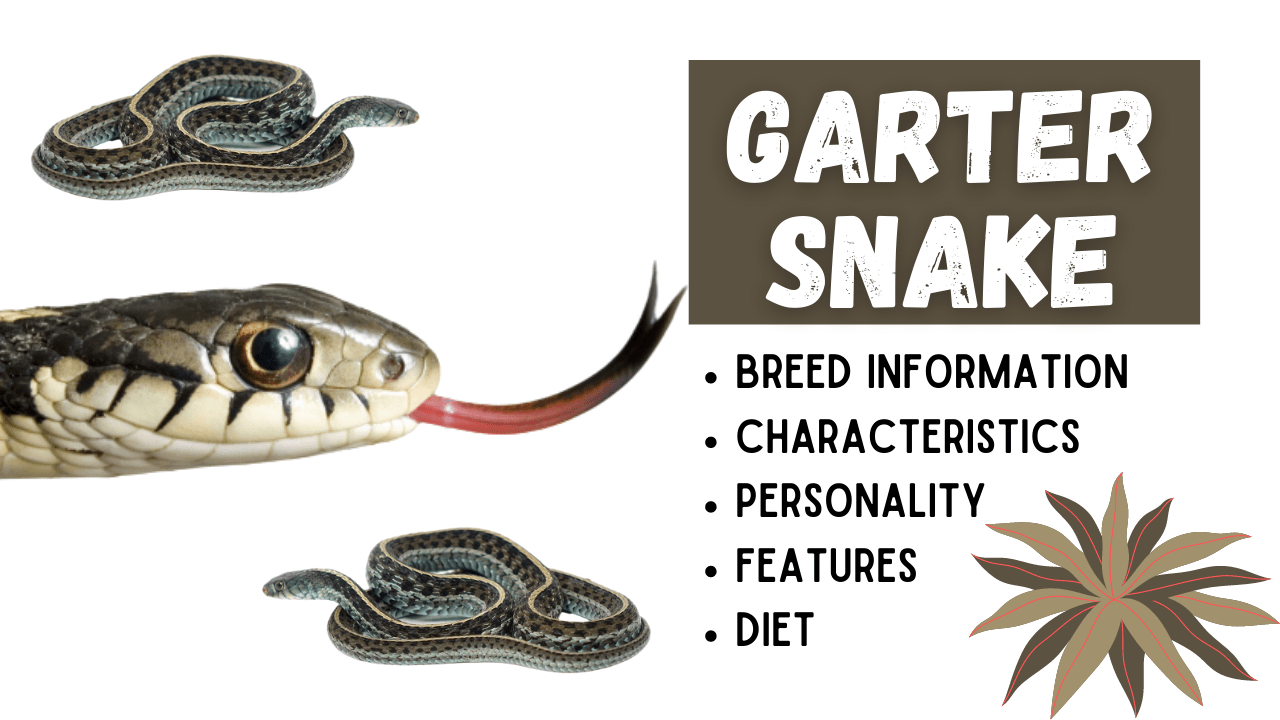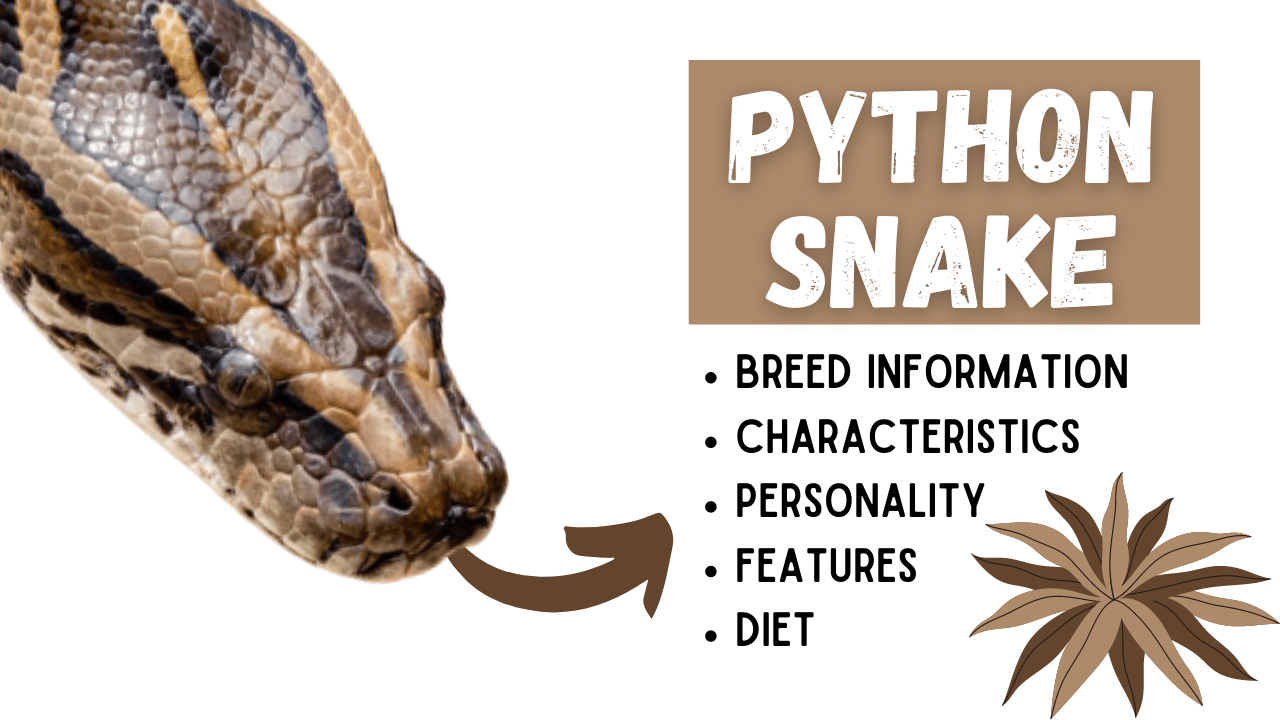
Garter snakes belong to the harmless snake family that is mostly kept as pets in the gardens. Garter snakes belong to the Colubridae family and Thamnophis genus. However, the scientific names of the various species of Garter snakes follow the genus, Thamnophis.
| Garter Snakes Breed Information | ||
| Family | Genus | Species |
| Colubridae | Thamnophis | 35+ |
| Habitat | Life Expectancy | Venom |
| North America | 10 to 14 years | Mild-Venomous |
| Length | Body | Temperament |
| 2 to 5 feet | Medium small, | Fast, docile |
| Weight | Reproduction | Danger Levels |
| 100 to 150 gm | Ovoviviparous | Low |
Habitat of The Garter Snakes
Garter snakes are the most commonly found snakes of North America, ranging from Canada to Florida, from the Atlantic Ocean to the Pacific Ocean and into southern Canada. It is widely found in eastern America, where it holds the status of state reptile of Massachusetts. Generally, it is not known to have any connection with Alaska, but a dead garter snake on the road told that it had an introduction to Alaska as well.
The garter snakes can be found anywhere in the grassy knolls, meadows, fields, lawns, woodlands, forests, and the areas near water. They prefer living in a moist environment with debris, under the boards, logs, and tree branches.
Physical Features of the Garter Snakes
The garter snakes are the common snakes that could be seen anywhere. They possess some features that would help distinguish them from other snake families.
Size
The Garter snakes are small to medium-sized snakes with a size ranging from 20 to 30 inches. The longest garter snake can be 5 feet long.
Colors
The garter snakes are found in a variety of colors. The longitudinal stripes make the usual appearance of the garter snakes and make them distinguished from other snakes. They usually have a dark body with green, blue, yellow, gold, red, orange, brown, and black colors on the base, with 3 yellow to red longitudinal stripes.
They have a white or light yellowish belly.
Skin
The skin of most of the garter snakes has kneeled scales on them. Some garter snakes appear with intricate splotchy patterns between their stripes. This makes them look checkered.
Tongue
The garter snakes possess a two-colored tongue with a slit at its tip.
Venom
Generally, garter snakes are thought to be non-venomous. They are venomous snakes but the neurotoxic venom they have is harmless and can not cause a serious injury to humans. It is because the snakes do not have an effective medium to inject that venom into the body. Even the bite of a garter snake is not a major concern. The venom is not injected through its bite.
Species of the Garter Snakes
The Garter snakes have more than 35 species with various subspecies. Below, some of the famous species have been discussed.
# 1
Common Garter Snakes
The Common Garter snake occurs in a wide range and is a common snake found in the United States of America.
The scientific name for the common garter snake is Thamnophis sirtalis. They usually have brown, gold, black, red, or olive dark bodies with stripes of yellow, green, blue, and white colors. Their heads are darker than the rest of the body. They are small and thin snakes, not more than 4 feet long.
# 2
Eastern Garter Snakes
The Eastern Garter snakes are mainly found in the Southeast and North America, Georgia, and Florida. The scientific name for them is Thamnophis sirtalis.
They have a distinct dark body with three yellowish longitudinal stripes. They often appear with a checkered pattern with a reddish or greyish body. They are usually 18 to 26 inches long. However, the longest Eastern Garter snakes can be as long as 49 inches.
# 3
Red-sided Garter Snakes
This is a stunning species of garter snakes mostly found in California. It has a scientific name as Thamnophis sirtalis parietalis.
The red-sided garter snake has a black or olive dark body with yellow or blue stripes with additional red bar lines at both sides of the body. They have a red or orange prominent head with a blue underside. They have bigger eyes than other garter snakes.
It can eat the poisonous pacific newts.
# 4
San Francisco Garter Snakes
The San Francisco Garter Snakes is quite similar to the red-sides garter snake. The scientific name for this species is Thamnophis sirtalis tetrataenia.
This snake is mostly found in San Francisco. It bears a red-colored head, big wide eyes, and can eat Pacific newts like the red-sided garter snakes.
The body of the San Francisco garter snakes has black, red, and blue-green stripes with a blue-green underside.
# 5
Checkered Garter Snakes
This is a small-sized snake mostly found in the Southwestern areas. It has a scientific name Thasmnophis marcianus.
The size of this snake is not longer than 2 feet. It has a dark body with a checkered pattern and light-colored thin stripes.
# 6
Texas Garter Snakes
This is a common snake mostly found in the state of Lone Star. It is also found in Kansas. The scientific name of the Texas Garter snake is Thamnophis sirtalis annectens.
This snake is found with a dark-colored body that has a red-colored stripe in the middle with two light-colored stripes on its sides.
Behavior and Habits of the Garter Snake
The Garter snakes are harmless and remain active mainly in the day time. They are fast-moving snakes and are mainly terrestrial snakes but also develop a habit of climbing the trees in search of prey.
Due to its small size, the Garter snakes are easy prey for predators like foxes, squirrels, hawks, bears, bullfrogs, snapping turtles, raccoons, and crows. When they are threatened, they secret a smelly musk.
The cold-climate Garter snakes remain hibernated throughout the winter and start mating in spring. Hundreds of snakes hibernate together in the form of large groups called a den.
The Garter snakes possess a special system of communication called pheromonal communication. The snakes track other snakes by following the pheromone-scented trails. The Garter snakes use their tongue flicking behavior and vomeronasal organ to communicate.
The Housing of The Garter Snake
As the Garter snake is harmless and has a compact small body, people like to keep this snake family as pets in their homes, gardens, and lawns.
It is quite easy to keep a Garter snake. It can be kept in a 30 to 50-gallon water tank or aquarium protected with a solid lid. This water tank or aquarium must be sufficient to store 113 to 180 liters of water.
Keep the aquarium at a warm place and make sure to provide fresh water. If the sunlight is not enough, a heat lamp or bulb can be used. Place small rocks and plants in the aquarium to provide a feeling of natural habitat for the snake. Use toilet paper or newspaper to make bedding and keep changing it regularly.
Feeding of the Garter Snake
The Garter snakes are small to medium in size and they like to eat small animals and birds like, earthworms, frog eggs, small rodents, small fish, slugs, leeches, lizards, and amphibians.
The young snakes need food every 5 to 7 days and the adult snakes require food with a gap of 10 days.
Reproduction
The Garter snakes are ovoviviparous and give birth to live young. The mating season of the Garter snake is when they wake up from hibernation in the spring and give birth in the summer.
The male snakes are more than female snakes. One or two female snakes are swamped by 10 male snakes. This phenomenon is known as ‘mating balls’.
If the mating takes place in fall, the female keeps the sperm inside her body until spring or whenever she wants it to fertilize with her eggs. A female Garter snake can give birth to 30 to 50 live young at one time.
[box type=”shadow” align=”” class=”” width=””]
Final Words
The Garter snakes are venomous snakes but their venom or bite is not harmful to humans. They can be easily kept as pets in the gardens. Just make sure to take the precautionary measures while handling them.
[/box]
Also Read:








